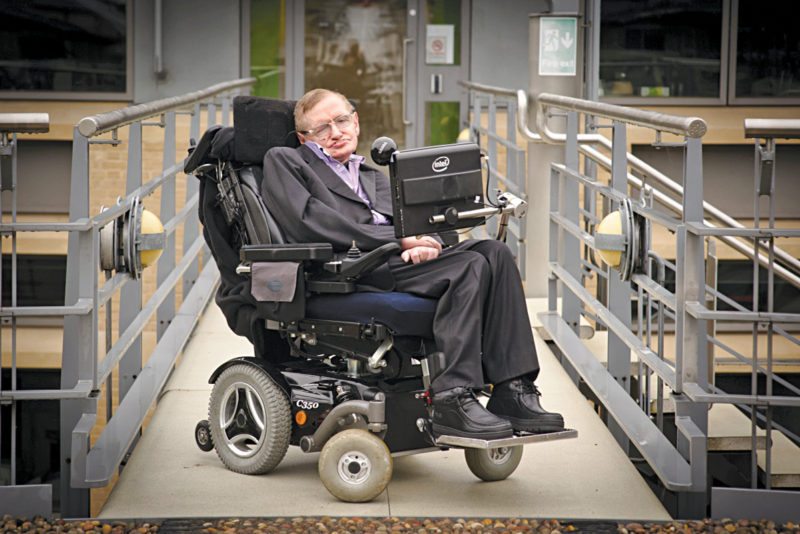Electronic devices have not only transformed the lifestyle of common people by providing comfort, security and entertainment, but have proved a boon for people with injuries or physical disabilities. This type of electronics is generally called assistive electronics.
There are many people using assistive electronic devices. Stephen Hawking is an important example with the best use of these. In 1963, he contracted motor neurone disease and was given two years to live.

Hawking suffers from a rare early-onset, slow-progressing form of amyotrophic lateral sclerosis (ALS), also known as motor neuron disease or Lou Gehrig’s disease, which has gradually paralysed him over the decades. He communicates using a single cheek muscle attached to a speech-generating device.
Yet, he went on to become a brilliant researcher and professorial fellow at Gonville and Caius College. From 1979 to 2009 he held the post of Lucasian professor at Cambridge, the chair held by Isaac Newton in 1663.
Hawking has more than a dozen honorary degrees and was made Commander of the Order of the British Empire (CBE) in 1982. He is a fellow of The Royal Society and a member of the US National Academy of Science. He is regarded as one of the most brilliant theoretical physicists since Albert Einstein. He is the former Lucasian professor of mathematics at University of Cambridge and author of A Brief History of Time, which was an international bestseller. His other books for the general reader include the essay collection Black Holes and Baby Universe and The Universe in a Nutshell.
At present, Hawking is at Dennis Stanton Avery and Sally Tsui Wong Avery, as director of research at Department of Applied Mathematics and Theoretical Physics and founder of Centre for Theoretical Cosmology at Cambridge.
For his communication, he initially raised his eyebrows to choose letters on a spelling card, but in 1986 he received a computer program called Equaliser, which is used to help people suffering from ALS who have lost the ability to speak and write. Hawking could simply press a switch to select phrases, words or letters from a bank of 2500-3000 that are scanned.
The program was originally run on a desktop computer, but later a small computer was attached to his wheelchair. Released from the need to use somebody to interpret his speech, he commented that, “I can communicate better now than before I lost my voice.”
Hawking gradually lost the use of his hand and, in 2005, began to control his communication device with movements of his cheek muscles. With this decline, there is a risk of him developing locked-in syndrome, so he is collaborating with researchers on systems that could translate his brain patterns or facial expressions into switch activations.
Assistive electronic devices
There are a number of assistive electronic devices or rehabilitation equipment to aid people with injuries or physical disabilities. These are tools, products or types of equipment that help people with disabilities or injuries, or the elderly perform daily tasks and activities. These devices may help to move around, see, communicate, eat or get dressed/undressed, and help a person improve the quality of life and maintain a sense of independence.











“At present, Hawking is at Dennis Stanton Avery and Sally Tsui Wong Avery, as director of research at Department of Applied Mathematics and Theoretical Physics and founder of Centre for Theoretical Cosmology at Cambridge”.
I’m sorry to remind you that Hawkins died in 2018